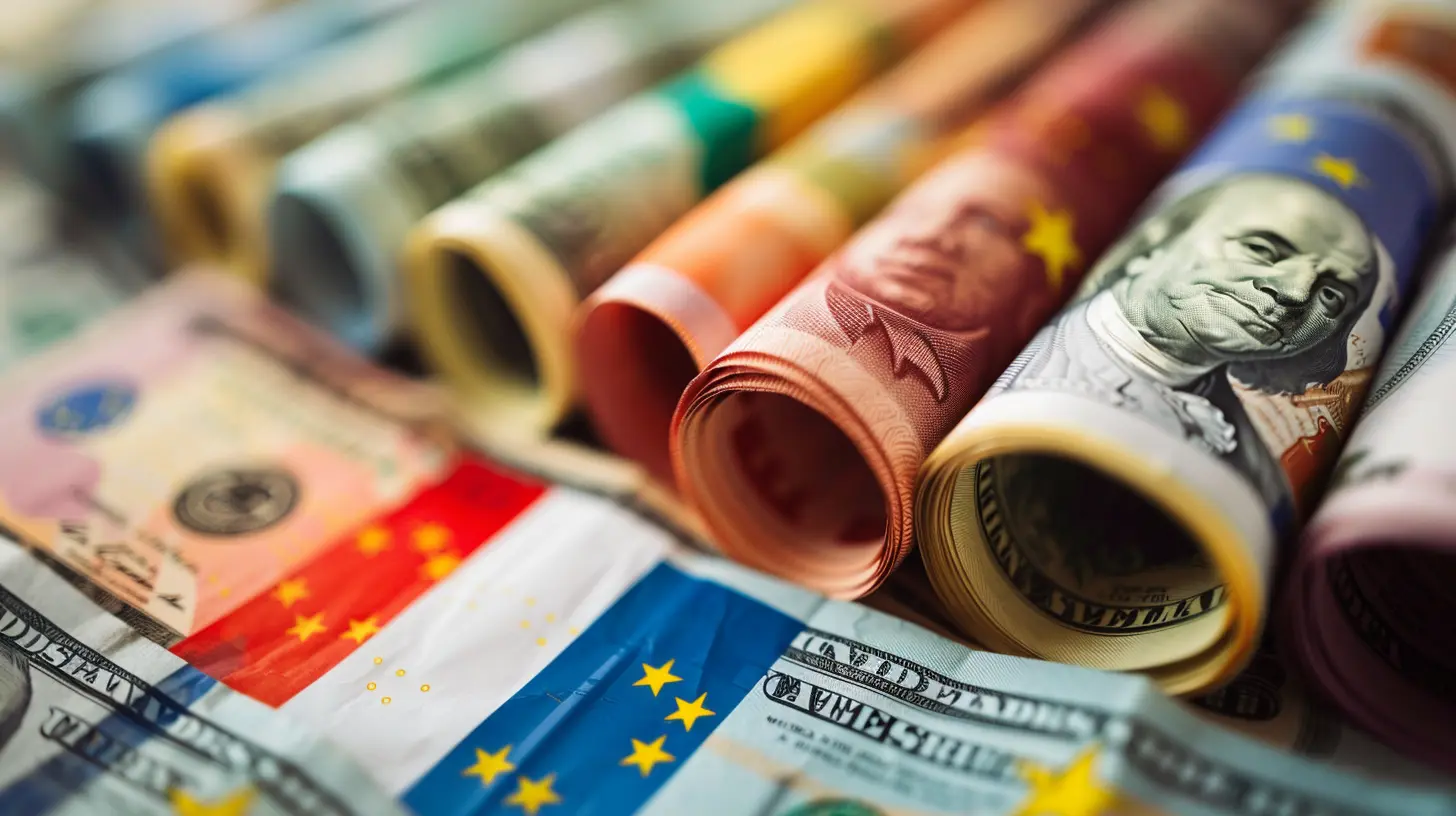How Interest Rates Differ Across Countries: A Global Perspective
24 July 2025
Interest rates are one of the fundamental economic drivers that shape a country's financial landscape. They influence everything from borrowing costs and inflation to investments and currency strength. But have you ever wondered why interest rates vary widely from one country to another? Why do some nations have ultra-low rates while others struggle with double-digit percentages?
In this article, we’ll dive deep into the factors that shape interest rates across the globe, what influences these differences, and how they impact economies and everyday life.

Understanding Interest Rates
Before we get into the global variations, let’s take a step back and understand what interest rates actually are.In simple terms, an interest rate is the cost of borrowing money. When you take out a loan, whether it's a mortgage or a personal loan, you pay interest to the lender. On the flip side, if you stash your money in a savings account, the bank pays you interest for keeping your funds with them.
Central banks, like the Federal Reserve in the U.S. or the European Central Bank, play a key role in setting the base interest rate. This, in turn, influences the rates commercial banks offer to borrowers and savers.

Why Do Interest Rates Vary Across Countries?
Now, let’s get to the big question—why do interest rates differ so much from one country to another? The answer lies in a mix of economic conditions, government policies, and external factors.1. Inflation Rates
Inflation is one of the biggest factors determining a country's interest rate. When inflation is high, central banks typically raise interest rates to slow down excessive spending and bring inflation under control.For example, in countries like Turkey or Argentina, where inflation has soared in recent years, central banks have had to impose high interest rates to stabilize the currency and prevent economic collapse. On the other hand, countries like Japan or Switzerland, which have struggled with low inflation, keep interest rates near zero or even negative to encourage spending.
2. Economic Growth and Stability
A country with strong economic growth and stability is more likely to have manageable interest rates. But in economies facing uncertainty—whether due to political instability, weak growth, or financial turmoil—interest rates tend to be higher to compensate for the higher risk of lending.For instance, developing nations often have higher interest rates than developed ones because investors perceive them as riskier. A loan in a stable economy like Germany or Canada is seen as safer than one in a country facing economic turmoil.
3. Monetary Policy and Central Banks
Every country's central bank has its own approach to setting interest rates. Some central banks adopt aggressive monetary policies, constantly adjusting rates to control inflation or stimulate economic growth. Others take a more conservative approach, keeping rates steady to avoid market shocks.The U.S. Federal Reserve, for example, closely monitors employment and inflation data to decide when to raise or lower rates. Meanwhile, the European Central Bank (ECB) often adopts a more cautious stance, balancing the needs of multiple countries within the Eurozone.
4. Government Debt Levels
A country’s debt burden also plays a role in its interest rates. High levels of government debt can push interest rates up because investors demand higher returns to compensate for the risk of lending to a heavily indebted nation.For example, Japan has one of the highest debt-to-GDP ratios in the world, yet it maintains near-zero interest rates. Why? Because people trust the Japanese government's ability to manage debt. However, in a country like Brazil, high debt levels combined with economic uncertainty force the government to offer higher interest rates to attract investors.
5. Foreign Investment and Capital Flows
Global investors play a significant role in shaping interest rates. A country with high foreign investments and strong capital inflows tends to have more stable or lower interest rates.If international investors feel confident about a country's economy, they pump money into government bonds and businesses, providing more liquidity and keeping borrowing costs low. However, if investors pull their money out due to uncertainty, interest rates might rise to compensate for the capital outflow.
6. Currency Strength and Exchange Rates
A country's currency value also affects interest rates. When a currency weakens, central banks might raise interest rates to make their currency more attractive to foreign investors.For instance, when the Indian rupee weakens against the U.S. dollar, the Reserve Bank of India may hike rates to attract foreign investments and stabilize the currency. On the flip side, a strong currency often allows countries to maintain lower interest rates without worrying about inflation.

Interest Rate Trends Across Different Countries
To see these factors in action, let’s look at real-world examples of how interest rates vary globally.United States (Moderate Interest Rates)
The U.S. Federal Reserve sets interest rates based on inflation and economic growth. In times of economic expansion, rates tend to rise, while during recessions, the Fed lowers them to stimulate borrowing and spending.Japan (Ultra-Low & Negative Rates)
Japan has been dealing with low inflation and sluggish economic growth for decades. To encourage borrowing and investment, the Bank of Japan has kept interest rates near zero and even ventured into negative territory at times.Brazil (High Interest Rates)
Brazil, like many emerging markets, has historically faced inflationary pressure and currency volatility. As a result, the country maintains higher interest rates to curb inflation and attract foreign investments.Switzerland (Negative Interest Rates)
Switzerland, known for its strong financial sector, has experimented with negative interest rates to discourage excessive savings and stimulate economic activity. This means depositors actually pay banks to hold their money!Turkey (Extreme Fluctuations)
Turkey has seen dramatic swings in interest rates due to economic instability and high inflation. The central bank has repeatedly changed its policies, leading to unpredictable borrowing costs.
How Do These Differences Affect You?
Interest rate differences don’t just affect governments and businesses—they impact ordinary people too!- If you're looking to invest internationally, understanding interest rate trends can help you decide where to put your money.
- If you're planning to take out a loan, whether at home or abroad, the country’s interest rate environment will determine your borrowing costs.
- Exchange rates and monetary policies can influence global travel, real estate, and even the price of imported goods.
Final Thoughts
Interest rates are much more than just a number—you can think of them as a country’s financial heartbeat. They reflect economic health, government policy, and investor confidence. While some nations enjoy ultra-low rates, others grapple with soaring costs due to inflation, instability, or capital flight.By understanding these global interest rate differences, you can make smarter financial decisions, whether you're investing, borrowing, or simply keeping an eye on the world economy.
all images in this post were generated using AI tools
Category:
Interest RatesAuthor:

Zavier Larsen
Discussion
rate this article
1 comments
Elora Miller
Great article! It effectively highlights the complexities of global interest rates. Understanding these differences is crucial for investors and policymakers. I would love to see more examples of how these rates impact everyday financial decisions, such as loans and savings in various countries.
August 10, 2025 at 10:50 AM

Zavier Larsen
Thank you for your feedback! I appreciate your suggestion and will consider including more real-world examples in future articles.


